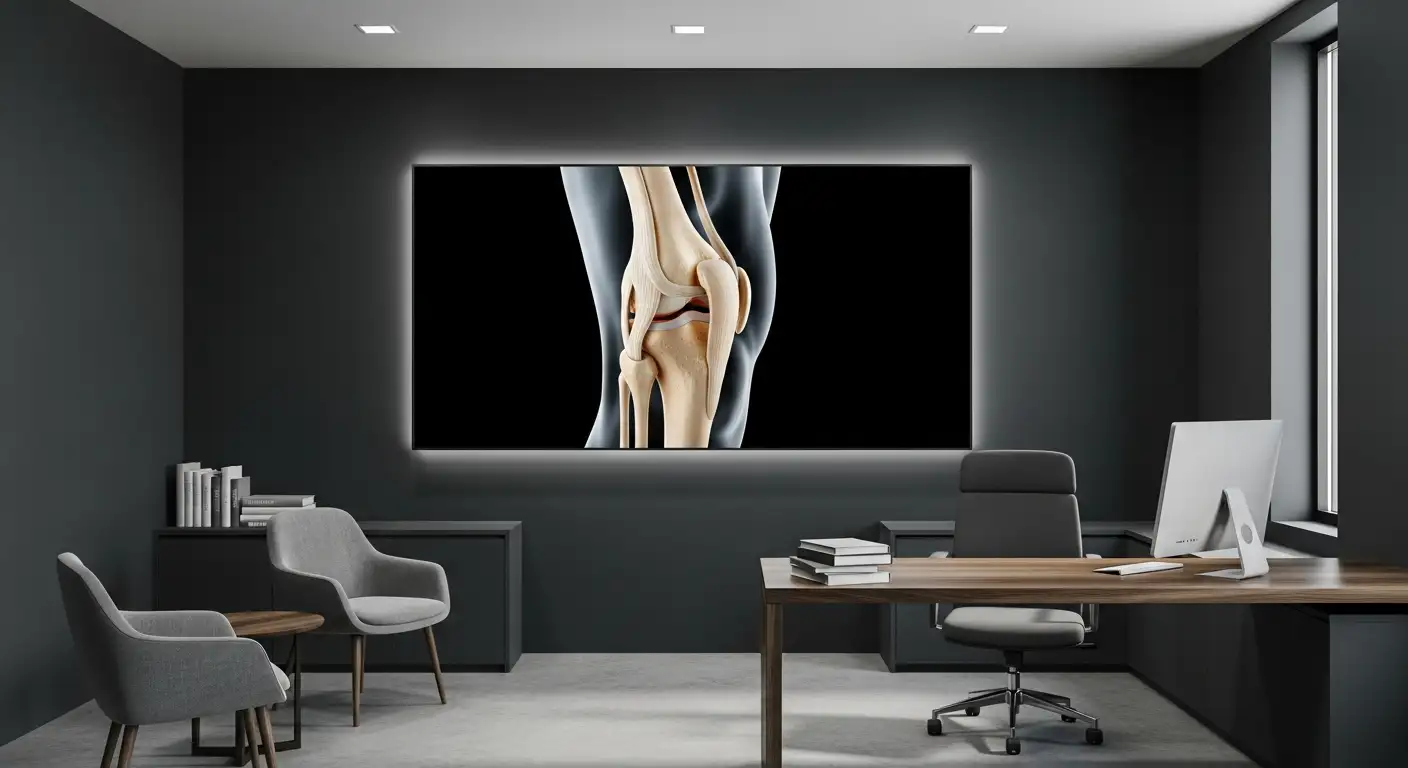Sitting with Piriformis Syndrome
Understanding Piriformis Syndrome
Piriformis syndrome is a condition that occurs when the piriformis muscle, located in the buttock, compresses the sciatic nerve. This compression can lead to pain, numbness, or tingling sensations in the buttock, hip, or upper leg. While this syndrome is relatively uncommon, accounting for only about 0.3% to 6% of lower back pain cases, it can cause significant discomfort for those who experience it [1].

Most cases of piriformis syndrome can resolve with rest and simple treatments within a few days or weeks. However, it is important to be aware that symptoms may return, particularly if correct treatment protocols are not followed.
Causes and Symptoms
The primary causes of piriformis syndrome include prolonged sitting, muscle imbalances, or overuse injuries. Individuals who engage in activities that require repetitive hip movement or those with previous injuries may be at higher risk of developing this condition.
The most common symptoms include:
SymptomDescriptionPain in the buttockLocalized pain in the area of the piriformis muscleHip painDiscomfort radiating to the hip regionUpper leg numbnessTingling or numb sensations traveling down the leg
The symptoms of piriformis syndrome often resemble those of sciatica, but are more localized to the piriformis muscle affecting a specific area of the sciatic nerve. Understanding these causes and symptoms can aid in recognizing the condition and guide individuals on how to sit with piriformis syndrome.
Managing Piriformis Syndrome
Managing piriformis syndrome effectively involves implementing key lifestyle changes, employing prevention strategies, and incorporating recommended exercises into daily routines.
Lifestyle Changes
Making specific lifestyle adjustments can lead to substantial improvements in piriformis syndrome symptoms. According to the Cleveland Clinic, these changes can often yield results within days or weeks. The following table outlines impactful lifestyle changes:
Lifestyle ChangeDescriptionIncrease ActivityEngage in regular physical activity to maintain muscle strength and flexibility.Weight ManagementAim for a healthy weight to reduce pressure on the pelvis and lower back.Ergonomic AdjustmentsModify seating and workspace to improve posture and comfort.Avoid Sitting for Prolonged PeriodsTake breaks every hour when sitting to reduce pressure on the piriformis muscle.
Prevention Strategies
Preventing recurrent episodes of piriformis syndrome is critical. As noted by the Cleveland Clinic, consideration of specific strategies can help. The following preventive measures can assist in avoiding this condition:
Recommended Exercises
Incorporating specific exercises into your routine can significantly improve symptoms and functionality associated with piriformis syndrome. As highlighted by the Cleveland Clinic, rest is not an effective treatment. Here is a list of beneficial exercises:
ExercisePurposePiriformis StretchStretches the piriformis muscle to alleviate tightness.Hip Flexor StretchOpens up the hip flexors and reduces strain on the piriformis.Glute BridgeStrengthens the glutes and stabilizes the pelvis.ClamshellsTargets hip muscles to improve strength and stability.Side-Lying Leg LiftsStrengthens hip abductors and helps prevent future pain.
Incorporating these recommendations for lifestyle changes, preventive strategies, and exercises can lead to effective management of symptoms associated with piriformis syndrome. For more tips on how to sit with piriformis syndrome, further resources are available to enhance understanding and application of these strategies.
Sitting Strategies for Relief
Sitting for prolonged periods can exacerbate discomfort associated with piriformis syndrome. Incorporating proper techniques can help alleviate symptoms and promote better posture.
Proper Sitting Posture
Maintaining correct posture while seated is essential for managing hip, leg, and lower back pain linked to piriformis syndrome. It is advisable to use an ergonomic chair that supports the natural curve of the spine. Incorporating lumbar support can further assist in maintaining a comfortable position. Key elements of proper posture include:
According to Vive Health, this proper sitting posture is the first step in managing symptoms.
Taking Breaks
Taking frequent breaks from sitting is crucial for preventing discomfort in the glutes, hip joints, and piriformis muscles. It is recommended to stand up and move around every 30 to 60 minutes. During these breaks, one can also engage in light stretching to alleviate tension.
Break FrequencyRecommended ActivityEvery 30-60 minutesStand up, walk around, and perform light stretches
These practices keep the muscles engaged and promote better circulation. According to Vive Health, consistent movement helps improve overall comfort.
Stretching Techniques
Incorporating targeted stretches into the daily routine can be highly beneficial for loosening tight piriformis muscles and reducing associated symptoms. Effective stretches can improve flexibility and blood flow. Recommended stretches include:
Regular practice of these stretching techniques can enhance range of motion and significantly relieve the symptoms of piriformis syndrome. Engaging in these strategies may not only provide immediate relief but also contribute to long-term management of the condition.
Additional Techniques for Pain Relief
Addressing the discomfort associated with piriformis syndrome may require a multifaceted approach. Utilizing techniques such as heat therapy and massage therapy can provide significant relief for many individuals.
Heat Therapy
Heat therapy can be highly effective in alleviating pain tied to piriformis syndrome. Applying heat to the hips, lower back, or affected leg areas can soothe aches and promote improved blood flow, which is beneficial for recovery and relaxation. Electric heating pads are a popular choice for this purpose, as they provide consistent warmth and can be adjusted to the user's comfort level [3].
MethodDurationBenefitsElectric Heating Pad20-30 minutesSoothes pain, improves blood flowWarm Towel or Cloth15-20 minutesConvenient and easily accessibleHot Water Bottle20-30 minutesPortable solution for muscle relaxation
Massage Therapy
Massage therapy can also play a crucial role in managing piriformis syndrome. A licensed massage therapist may perform deep tissue or myofascial release techniques to help relax the piriformis muscle and surrounding areas. This can alleviate tightness and discomfort, restoring mobility in the hip and gluteal regions. Additionally, regular massage can prevent the recurrence of tension in the area, promoting overall muscle health [4].
Massage TechniqueDurationBenefitsDeep Tissue Massage60 minutesTargets deeper muscle layers for reliefMyofascial Release60 minutesFocuses on connective tissue releaseSelf-Massage TechniquesOngoingAccessible method to manage tension
Incorporating these additional pain relief techniques along with general practices can enhance comfort for those dealing with piriformis syndrome. For more information on managing this condition, consider the lifestyle changes and recommended exercises that may further support relief efforts.
Seeking Professional Help
When dealing with piriformis syndrome, seeking professional assistance can be crucial for effective management and recovery. Consulting with a healthcare provider and pursuing physical therapy are two valuable steps individuals can take to alleviate symptoms and regain comfort.
Physical Therapy
Physical therapy plays a vital role in treating piriformis syndrome. A trained physical therapist can guide patients through exercises that focus on strengthening and stretching the affected muscles, ultimately helping to relieve pain. Physical therapists may also recommend using heat or cold therapy before and after sessions to enhance recovery [4].
Physical Therapy TechniquesPurposeStretching ExercisesImprove flexibility and relieve tension in the piriformis muscleStrengthening ExercisesBuild muscle support around the pelvis and enhance stabilityHeat or Cold TherapyProvide comfort and reduce inflammation before and after treatment
Furthermore, if traditional methods, including rest, medication, or physical therapy, fail to alleviate symptoms, it may be necessary to evaluate additional treatments.
Consultation with Healthcare Provider
If symptoms persist even after consistent stretching and exercises implemented over a month, consulting a healthcare provider is advisable. A healthcare provider can conduct a thorough evaluation to determine the best course of action, which may include muscle relaxants, non-steroidal anti-inflammatory drugs (NSAIDs), or even steroid injections around the piriformis muscle to address inflammation and pain.
In cases where conventional treatments do not bring relief, it may be beneficial to seek a specialist, such as a nerve specialist, who can evaluate the possibility of nerve decompression surgery [5]. This surgery may help release the sciatic nerve from the piriformis muscle if conservative management strategies are ineffective.
Taking proactive steps by consulting with professionals can significantly assist in managing piriformis syndrome for better daily comfort and overall well-being.
References
[2]:
[3]:
[4]:
[5]:





